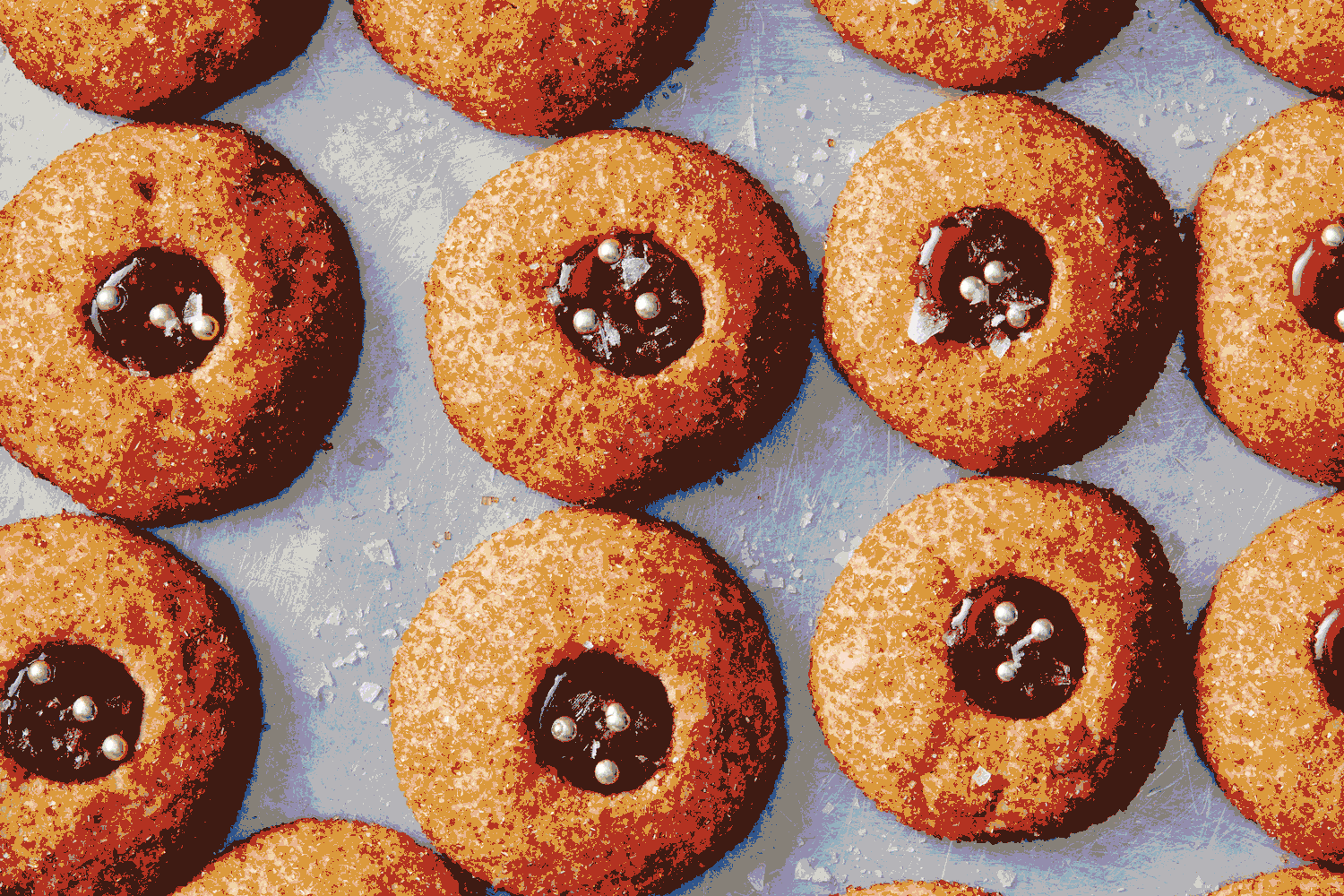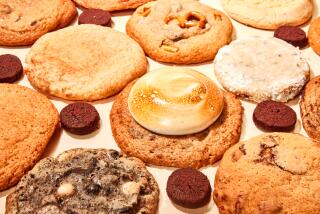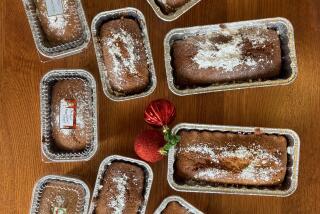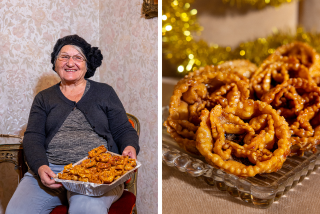12 Days of Holiday Cookies: Lemony Gingerbread Cutouts

I’ve added tart lemon zest and ground coriander — a signature ingredient in Dutch speculaas – to wake up and brighten traditional gingerbread. A lemon juice glaze highlights that tartness even more. I love to use Meyer lemons for both their more floral, sweet zest and juice, but regular lemons work just as well.
You can cut these gingerbread in any shapes of course, but as a nod to the landscape of Los Angeles, I love to use palm tree, cactus and monstera leaf cutters (available through seller LILIAO on Amazon) and crust them in green sparkling sugar dotted with sugar snowflakes. If you can’t find snowflakes, pearl sugar or white dragées work just as well — anything to add a bit of wintery flourish even if you never see it IRL.
Our first annual collection of 12 L.A.-inspired holiday cookies.
Lemony Gingerbread Cutouts
2 hours. Makes about 2 dozen.
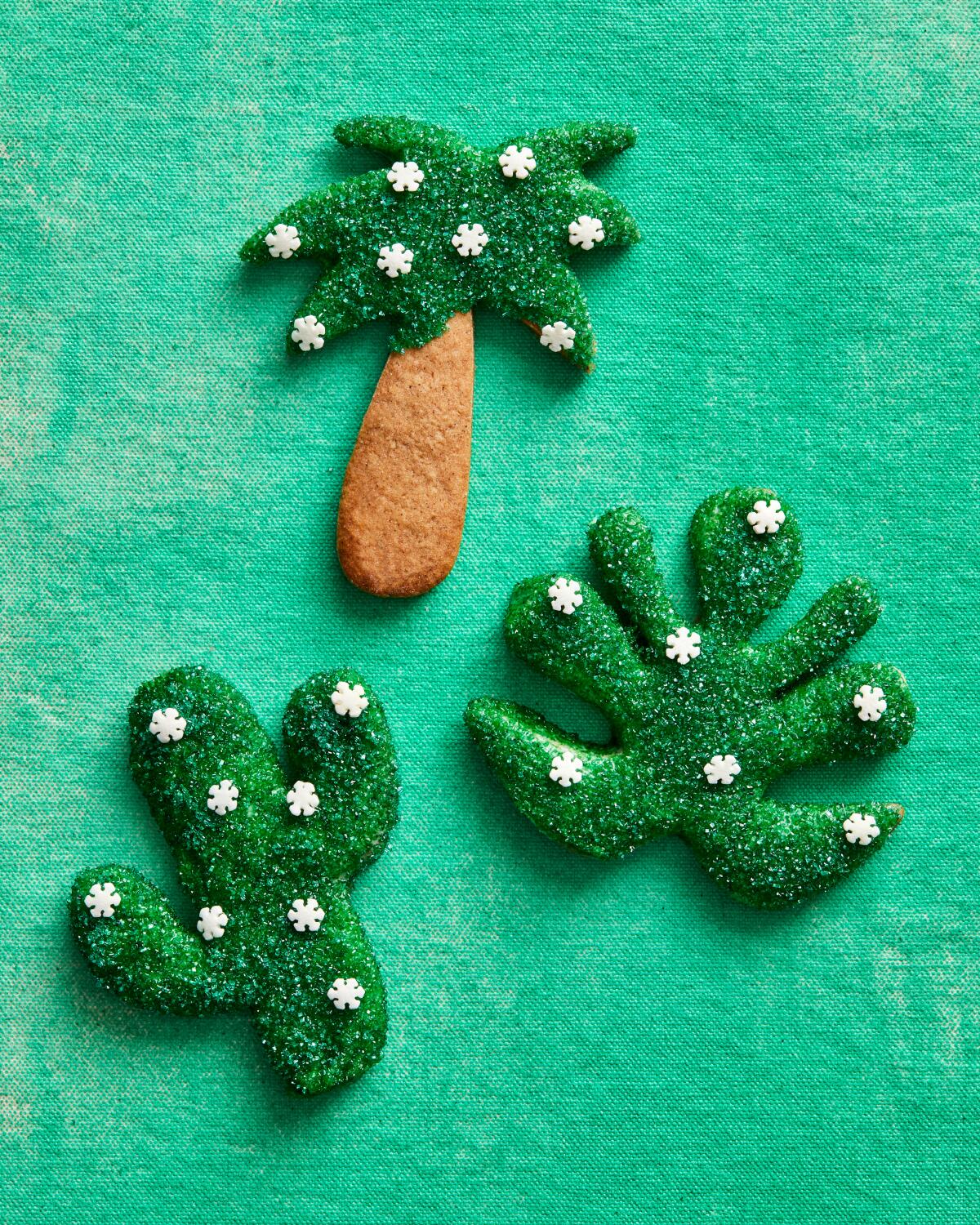
Ingredients
- 1 cup packed dark brown sugar
- ¾ cup unsalted butter, at room temperature
- 1½ tablespoons ground cinnamon
- 1 tablespoon ground ginger
- 2¼ teaspoons freshly grated nutmeg
- 1½ teaspoons ground cloves
- 1½ teaspoons ground coriander
- 1 teaspoon kosher salt
- ½ teaspoon baking soda
- 3 small Meyer lemons or regular lemons
- 3 cups all-purpose flour (13½ ounces; see Baker’s Note), plus more for dusting and rolling
- 1/3 cup whole milk
- 4 cups powdered sugar, sifted (1 pound; see Baker’s Note)
- 2 cups dark green sanding sugar
- White snowflake or pearl sugar, to garnish
Instructions
- In a large bowl, combine the brown sugar, butter, cinnamon, ginger, nutmeg, cloves, coriander, salt and baking soda. Use a Microplane grater to finely grate the zest off of two lemons into the bowl; reserve the lemons. Beat the mixture with an electric mixer on medium-low speed until smooth, about 2 minutes (see Baker’s Note). Add half the flour and beat on low speed until almost combined. With the mixer on low speed, pour in the milk, then immediately add the remaining flour and continue mixing until just combined. Split the dough in half and shape each into a ½-inch-thick disk. Wrap each separately in plastic wrap and refrigerate until firm, at least 15 minutes or up to overnight.
- Heat the oven to 350 degrees. Line 2 baking sheets with parchment paper.
- Unwrap 1 disk and transfer to a lightly floured work surface. Use a rolling pin to flatten the dough until 3/16-inch thick, then cut out shapes using palm tree, cactus and monstera leaf cutters (see note above), dusting the cutters with more flour between each use to keep them from sticking to the dough. Use the tip of a paring knife or a cotton swab to press through the more intricate parts of the cutters so the dough shapes come out easily, and use a flat metal spatula to transfer the cut shapes to the baking sheets, spacing 1 inch apart. Reroll and flatten scraps as many times as you can until no more dough is left.
- Bake, rotating sheets from front to back and top to bottom halfway through, until cookies are set and dry to the touch, about 16 minutes. Let the cookies cool on the baking sheets for 1 minute before transferring to a wire rack to cool completely. Repeat with the remaining dough disk to make more cookies.
- To make the glaze, juice all three lemons, measure out 6 tablespoons and pour into a wide shallow bowl; reserve any remaining. Add the powdered sugar to the juice and stir until it forms a thick but pourable glaze, thinning it out with more juice, if necessary. Spread the sanding sugar over the bottom of another wide shallow bowl.
- Dip the top of each monstera leaf and cactus cookie in the glaze to coat completely then lift to let the excess drain; for the palm trees, just dip the leaves section, leaving the trunk bare. Immediately place the glazed side of the cookie in the sanding sugar and press lightly to ensure the sugar evenly covers the glaze. Invert the cookies onto a wire rack and immediately press in sugar snowflakes over the cookies. Let the cookies stand until the glaze sets firm, at least 20 minutes.
Make ahead: The cookies can be stored in an airtight container at room temperature for up to 3 days.
Baker’s note: When measuring flour or powdered sugar, spoon it into a dry measuring cup and level off the excess. Scooping compacts the ingredients, resulting in dry baked goods. And if using a stand mixer, use a rubber spatula to scrape the bottom of the bowl and the paddle after beating the butter and sugar together and after the dough is mixed to ensure the ingredients are evenly mixed throughout.
More to Read
Eat your way across L.A.
Get our weekly Tasting Notes newsletter for reviews, news and more.
You may occasionally receive promotional content from the Los Angeles Times.
